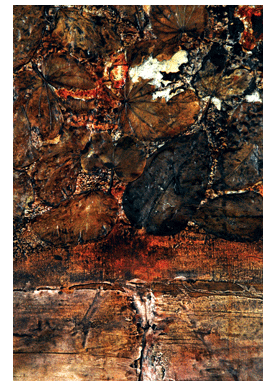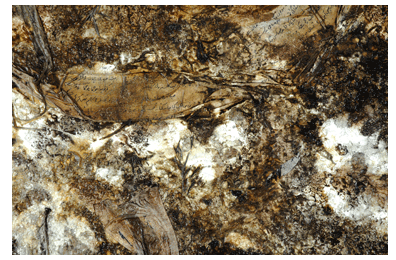- Prelude
- Editorial
- ...Where ever I stumble, let painting lie before me....
- ...Colour guides in its own direction...
- Abstract Art: Popular Myths and History
- Abstract Rhetoric:
- Ram Kumar: A transition from figurative to abstract
- I walk the line
- Exploring a twilight zone
- Articulating the Abstract voice from Madhya Pradesh
- Perception of Abstract in forms
- Confronting Cultures: The Dialectic of Abstraction in Bengal Art
- K.C.S. Paniker and his Words and Symbols
- Dialectics of Abstract Art and Its Indigenous Identity
- Between Ambivalence and Criticism: Why Abstraction?
- Notations and Rhythm in Space: Sushen Ghosh
- Victorian Era: Eclectic Furniture
- Patek Philippe : an overview
- The “Theme Pandals” of Durga Pujo: An Unexplored Discourse
- Musings on Music
- Butterflies in the stomach… still
- Contemporary Art Market Report 2009-10
- Artist Index and Statistics
- Auction Reports
- Recent works of Pavan kumar D. - In the Journey of Learning things
- Narrating “with a pinch of salt” Paintings of K.P.Reji
- Reclaiming an artist of true calibre
- Musings from Chennai
- An Annual Homage..
- Art Events Kolkata: September-October 2010
- Mumbai Art Sighting
- Art Bengaluru
- Unveiling the next in line
- Preview
- In the News
- Sotheby’s : Important Watches Hong Kong
ART news & views
I walk the line
Volume: 3 Issue No: 10 Month: 11 Year: 2010
The content of my work is such that I can be said to walk the line between the real and the imagined. My paintings try to express the complexity of our condition but that in an allusive way so that the role of the subliminal also gets validated. When I work, I feel a great space. I belong to no tradition, no method, no religion, no school, I can only recognise my own self and my freedom.  Art for me, like life, is about transcending boundaries and intimating a sense of belonging to a larger world. It is this unrestricted larger space that I think what my works really stand for.
Art for me, like life, is about transcending boundaries and intimating a sense of belonging to a larger world. It is this unrestricted larger space that I think what my works really stand for.
Inspiration can come to me from a seashell, ancient crumbling walls, fire or a thin white dupatta, which can be a shroud or a symbol for peace. Ideas can spring either from the most ordinary or from the sublime; I live with both in equal measure, as long as they lead me to some hitherto unknown revelations.
Around 2002, the focus in my work shifted from paints to materials; I began experimenting with a variety of fabrics, paper, ropes, cement, nails and burnt text, gradually building a visual alphabet where nails form dividing lines partitioning mountainous landscapes and ropes lie tangled on bleached spaces waiting to unravel their secrets or pull quietly into a noose.
My first such series was called the “The Book of Disquiet “. For the text, I retrieved bits, which were the remnants of some books I had burnt in a momentary lapse of reason; stories by Mahashweta Devi, poems by the revolutionary, Faiz, the great humanist, Ghalib, and songs by Bob Dylan.
I used these in combination with other material to create my first relief paintings which became not just images but structures for thought as they began to live some twilight zones between the corporeal and the mystical.
The works were unadorned to stay away from artifice but more importantly, to collaborate with my material and allow each to speak in its own distinct voice.  I stop agitating the surface when I find that despite the plethora of elements and layers that have gone in, the painting looks calm. I love the deceptive stillness of such layered works. One space, one tone, not stuck in time but instead, sheltering multiple meanings. Abstraction may be a style for art historians, to me it is the only stylistic device by which I can occupy several worlds and still be free to choose where I belong. And it is also helps inhabit the larger space I have just talked about.
I stop agitating the surface when I find that despite the plethora of elements and layers that have gone in, the painting looks calm. I love the deceptive stillness of such layered works. One space, one tone, not stuck in time but instead, sheltering multiple meanings. Abstraction may be a style for art historians, to me it is the only stylistic device by which I can occupy several worlds and still be free to choose where I belong. And it is also helps inhabit the larger space I have just talked about.
In later series, I used text from letters written to me; these letters, though personal accounts, bring into the frame warmth and authenticity. Admissions of loneliness, equanimity in the face of death, humour and political criticism have all evaded censorship and are bare to the eyes; more importantly they allow allusions not to be broadcasted but intimately shared. If you erase the names, locations and dates, the letters will transcend such boundaries and offer insights into the universal, that which is all too human without being time bound.
Urdu in my works has evolved beyond the traditional Bismillah category of calligraphy, and has become a cultural symbol possessing a role in the modern secular discourse, thus asserting its newly acquired position in a syncretic Indian art. All the other material like plaster, soot, nails and rope continue to enrich my grammar with their individual textures and meanings; with leaves, sea weed, shells, and forest debris now bringing in a natural and a more organic dimension into my art.
I work slowly in layers, embedding leaves collected from my many journeys to New York, China, Morocco and Garhwal over the years. These I mix together and plant in my paintings to bind within them tales from different forests. This is an important step in the direction of nature art as well as spiritualism; both highlight our responsibility towards our home, the earth and the beautiful indelible ties that bind us. Today, in the absence of religion, it is nature that often fulfils my 'inner necessity', which Kandinsky wrote about.
Last month, while searching for new material, I went for a sculpture workshop and was given a studio inside an old medieval fortress. My immediate reaction was to do an installation around the idea of escape.  I found a doorway, which led to the open ramparts. When I saw the magnificent view of the open sky and the mountains from there, I changed track and the work became all about a passage, a movement from inside to outside, a journey from one world into another, about the connection between man and nature, about the cycle of life and death. This resulted in a sound installation, which I recorded and set up at the threshold to heighten emotions when the viewer would make this journey briefly through the fortress doorway out into the open space. I wrote a free verse text for this and recorded it in a neutral, ossified sort of a voice that could not be dated. There was one wonderful moment when it started raining and soon I found almost 40 people, gathered in my small passage for shelter. When the excitement and furtive smiles calmed down, as we huddled close together watching the rain cover the green hills in a stole of grey, they began to notice my voice coming from the old iron doorway:
I found a doorway, which led to the open ramparts. When I saw the magnificent view of the open sky and the mountains from there, I changed track and the work became all about a passage, a movement from inside to outside, a journey from one world into another, about the connection between man and nature, about the cycle of life and death. This resulted in a sound installation, which I recorded and set up at the threshold to heighten emotions when the viewer would make this journey briefly through the fortress doorway out into the open space. I wrote a free verse text for this and recorded it in a neutral, ossified sort of a voice that could not be dated. There was one wonderful moment when it started raining and soon I found almost 40 people, gathered in my small passage for shelter. When the excitement and furtive smiles calmed down, as we huddled close together watching the rain cover the green hills in a stole of grey, they began to notice my voice coming from the old iron doorway:
“As landscapes rise from your eyes, I feel lost.
There are bullets for stones in the fire pond.
The muddy river leaves warm prints in the rain,
I see a dream of drowning.
There is life now in the hearts cemented with fear,
Even the soldiers are breaking their silence.
I know this threshold,
I belong there.
Out of jasmine comes the light
Clutching hills born of time
The day is our witness
Mad heart, be brave
I am not yet born
And there is nothing to forgive
As a night of song comes to an end…”
This was a defining moment for my installation and I was quite lucky to experience the energy it evoked. My material turned out to be fortress walls, the hills, rain, my voice, and of course, the people who found themselves unexpectedly encountering the work.
I have recently planted seeds of commonplace Delhi flowers, for the seventh time, in the dusty parking lot near my studio in Shahpur Jat.
Each time I do this, the flowers die prematurely, but I guess it is in my temperament to refuse stubbornly to give in and actually to hope that they will be cared for by the local people sometime soon. So I plant those seeds again. In an abstract sense, this is becoming a work in resistance, which may not always end up in triumph. There could be survival, there could be defeat, with that element of doubt, I choose to continue.
This is not martyrdom; it is actually guerilla warfare.
By Saba Hasan